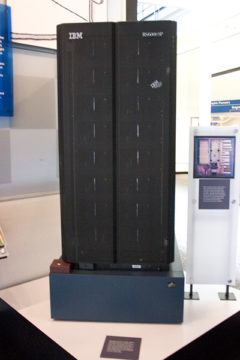by Jochen Szangolies

On May 11, 1997, chess computer Deep Blue dealt then-world chess champion Garry Kasparov a decisive defeat, marking the first time a computer system was able to defeat the top human chess player in a tournament setting. Shortly afterwards, AI chess superiority firmly established, humanity abandoned the game of chess as having now become pointless. Nowadays, with chess engines on regular home PCs easily outsmarting the best humans to ever play the game, chess has become relegated to a mere historical curiosity and obscure benchmark for computational supremacy over feeble human minds.
Except, of course, that’s not what happened. Human interest in chess has not appreciably waned, despite having had to cede the top spot to silicon-based number-crunchers (and the alleged introduction of novel backdoors to cheating). This echoes a pattern well visible throughout the history of technological development: faster modes of transportation—by car, or even on horseback—have not eliminated human competitive racing; great cranes effortlessly raising tonnes of weight does not keep us from competitively lifting mere hundreds of kilos; the invention of photography has not kept humans from drawing realistic likenesses.
Why, then, worry about AI art? What we value, it seems, is not performance as such, but specifically human performance. We are interested in humans racing or playing each other, even in the face of superior non-human agencies. Should we not expect the same pattern to continue: AI creates art equal to or exceeding that of its human progenitors, to nobody’s great interest? Read more »

